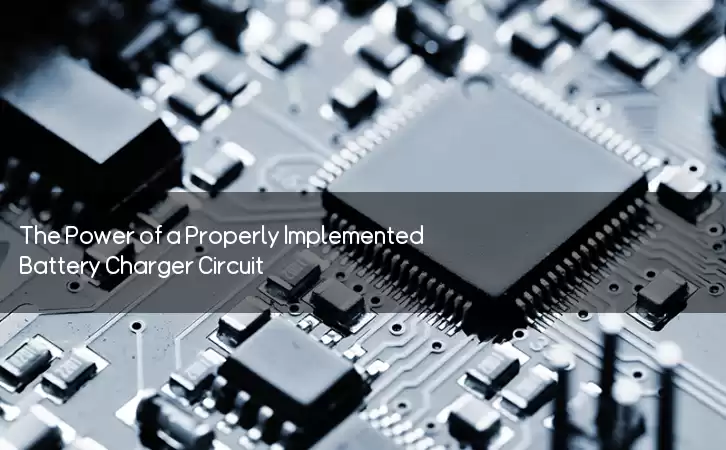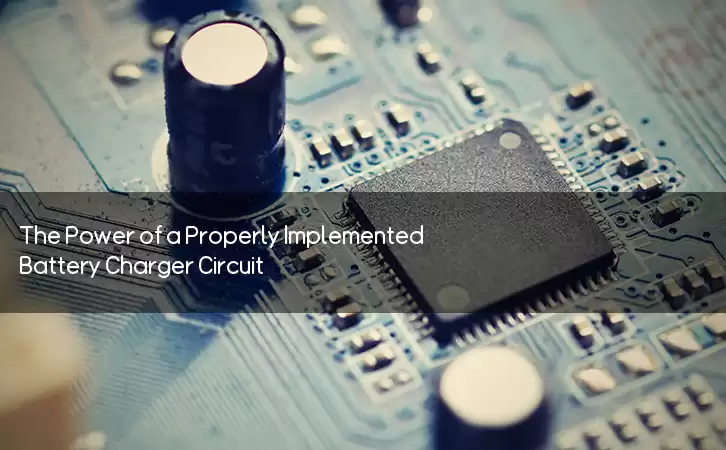Information Center
The Power of a Properly Implemented Battery Charger Circuit
Published:2023-08-01 20:33:24 Author:Green WCND Views:68Battery Charger Circuit

A battery charger circuit is an electronic power supply that converts electrical energy into chemical energy. This circuit is used to charge the energy storage cells or batteries by providing them with an electrical charge. The battery charger circuit can be used for various types of batteries, such as lead-acid batteries, nickel-metal hydride batteries, and lithium-ion batteries.

The basic principle of a battery charger circuit is to provide the correct electrical current and voltage to the battery for a certain period of time. The amount of electrical energy that is required to charge a battery depends on its capacity, which is measured in ampere-hours (Ah). The charging process can be divided into three stages, namely the bulk charge, absorption charge, and float charge.
In the bulk charge stage, the battery charger circuit provides a constant current to the battery until its voltage reaches a certain level. This is the initial charging stage, where the battery is charged at a high current rate to quickly restore its energy. In the absorption charge stage, the battery charger circuit provides a constant voltage to the battery while reducing the current flow. This stage takes a longer time to complete than the bulk charge stage as the battery is charged at a lower current rate to prevent overheating and damage.
The final stage of the battery charging process is the float charge stage. In this stage, the battery voltage is maintained at a certain level, and the battery charger circuit reduces its current output to avoid overcharging the battery. When the battery is fully charged, the charger circuit will stop charging and switch to a trickle charge mode to maintain the battery’s charge level.
The main components of a battery charger circuit include the transformer, rectifier, smoothing capacitor, voltage regulator, and charge control circuit. The transformer converts the AC voltage from the mains into a lower voltage, which is then rectified by the diodes in the rectifier circuit. The smoothing capacitor filters out any ripples in the rectified DC voltage, providing a smooth DC voltage to the voltage regulator.
The voltage regulator controls the output voltage of the battery charger circuit and maintains it at a constant level. There are two types of voltage regulators used in battery charger circuits, namely linear regulators and switching regulators. Linear regulators are simple and easy to use, but they are not efficient and generate a lot of heat. Switching regulators are more complex but are more efficient and generate less heat.
The charge control circuit is used to monitor the battery’s voltage and adjust the charging current and voltage accordingly. It also provides protection to prevent overcharging and overheating of the battery. The charge control circuit can be implemented using various methods, such as voltage sensing, current sensing, and impedance sensing.
In conclusion, the battery charger circuit is a crucial component in charging batteries for various electronic devices. It provides the correct amount of electrical energy to the battery, ensuring a safe and efficient charging process. The proper implementation of a battery charger circuit is essential to extend the battery life and prevent any damage to the battery.
Power Adapter Design and Customization Guide for Portable Electric KettlesI. Common Design Types for Portable Electric Kettle Power AdaptersPortable electric ke···
I. Common Design Types of Power Adapters External Independent Type (Most Common) Design: A standalone adapter (e.g., "black brick") connected to the p···
Handheld Vacuum Cleaner Power Adapter Selection GuideIntroductionHandheld vacuum cleaners have become a mainstream tool for household cleaning due to their port···
Drill Power Adapter Selection Guide.drill-container { font-family: Arial, sans-serif; line-height: 1.6; max-width: 800px; margin: 0 auto; padding: 20px; } .dril···





